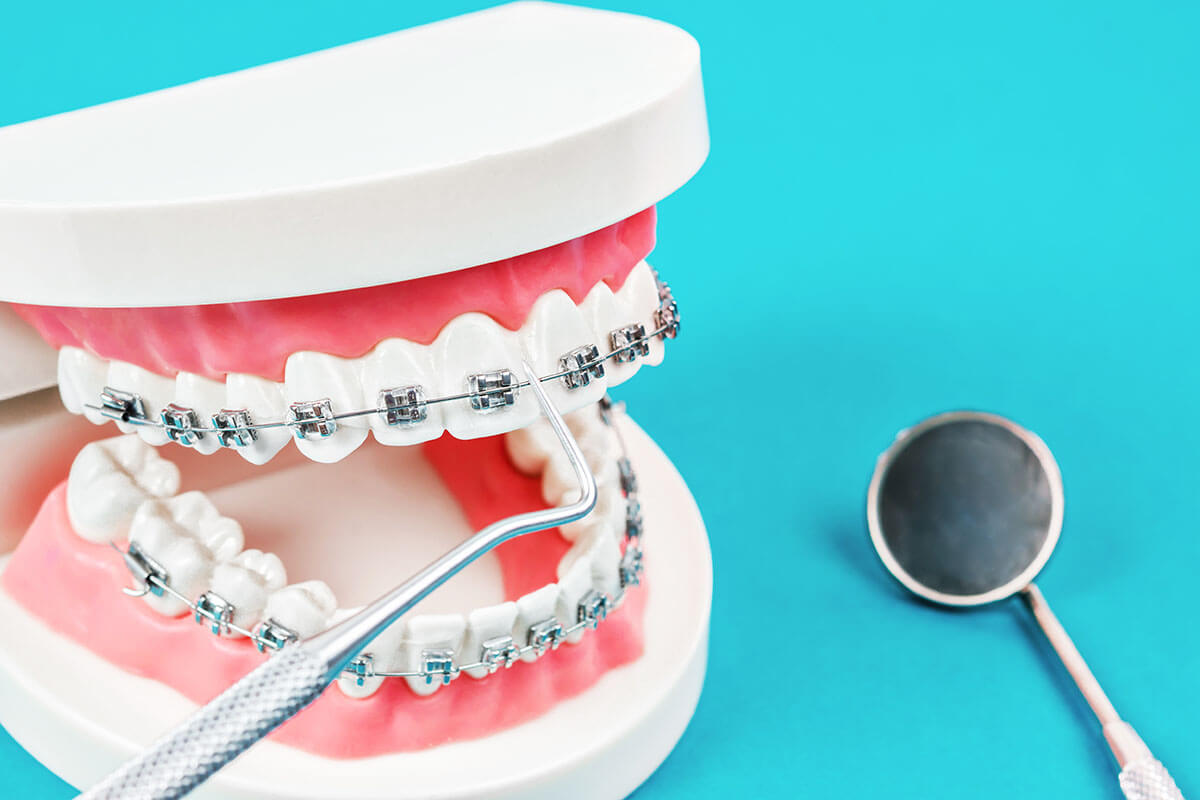Comprehensive Guide to Orthodontics Procedures for Correcting Oral Misalignments
In the world of orthodontics, the journey to attaining a completely aligned smile involves a myriad of treatments tailored to deal with dental imbalances. From conventional braces to invisible aligners and even medical choices, the area of orthodontics provides a variety of services to resolve varying degrees of oral irregularities. Recognizing the intricacies of each treatment, including their mechanisms, benefits, and possible disadvantages, is crucial in making notified choices about one's orthodontic therapy. As we browse through the detailed overview to orthodontic procedures for remedying oral misalignments, the complex information of each method will unfold, clarifying the course towards a practical and unified oral alignment.
Orthodontic Procedures Review

Normal modifications and tracking are crucial parts of orthodontic treatment to make sure progress is on track and to make any type of necessary adjustments along the means. By going through orthodontic treatments, clients can not just attain a straighter smile yet also enhance their total oral health and feature.
Traditional Braces: Just How They Work
When thinking about orthodontic treatments for oral imbalances, traditional dental braces stand out as a time-tested method for dealing with teeth placing. Typical braces contain brackets, wires, and bands that work with each other to use constant pressure on the teeth, gradually relocating them right into the wanted placement. The brackets are connected to the teeth using an unique adhesive, and the cords are threaded with the braces. By readjusting the stress of the wires, orthodontists can control the instructions and pressure related to each tooth, guiding them right into appropriate placement with time.
One trick aspect of exactly how conventional dental braces work is the procedure of bone improvement. As pressure is put on the teeth through the dental braces, the bone bordering the teeth is reshaped to sustain the new tooth placements. This renovation is essential for the long-lasting security of the remedied positioning. Individuals will require regular changes at the orthodontist's office to make sure the braces remain to use the appropriate pressure for effective teeth motion.
Unseen Aligners: Cons and pros
Undetectable aligners supply a discreet and convenient choice to traditional braces for dealing with oral imbalances. These clear, custom-made trays are essentially unseen when put on, making them an attractive choice for individuals seeking a much more visually pleasing orthodontic therapy. Among the key benefits of unseen aligners is their removability, enabling much easier upkeep of dental hygiene compared to standard dental braces. People can get rid of the aligners prior to consuming or cleaning their teeth, lowering the danger of food obtaining embeded the device and streamlining the cleansing process.

Surgical Orthodontic Options
Surgical interventions in orthodontics present feasible options for attending to intricate dental imbalances that may not be effectively dealt with through standard orthodontic treatments. While invisible aligners and standard dental braces can deal with numerous orthodontic problems, specific instances call for surgical intervention to accomplish ideal outcomes. Surgical orthodontic alternatives are generally suggested for serious malocclusions, substantial jaw disparities, and instances where the underlying bone framework needs adjustment to attain correct placement.
One common medical orthodontic treatment is orthognathic surgery, which involves repositioning the jaws to correct functional issues such as difficulty talking or eating. This surgical procedure is usually performed in cooperation with an orthodontist that aids straighten the teeth prior to and after the procedure. Surgical orthodontics may also involve treatments to reveal affected teeth, eliminate excess gum cells, or improve the jawbone to develop a much more harmonious facial account.
Prior to thinking about surgical orthodontic options, patients undergo a comprehensive evaluation to figure out the need and possible benefits of such interventions. cumming orthodontics. While surgical treatment may appear challenging, it can substantially improve both the feature and looks of the smile in situations where conventional orthodontic therapies fail
Retainers and Post-Treatment Treatment

Post-treatment treatment involves adhering to the orthodontist's directions faithfully. This may consist of appropriate dental hygiene techniques, going to follow-up visits, and wearing the retainers as prescribed. Failure to adhere to post-treatment treatment instructions can cause relapse, where the teeth slowly move back in the direction of their initial positions. Regular retainer wear, good oral health, and regular dental exams are vital for keeping the outcomes achieved with orthodontic surgical procedure and guaranteeing the lasting stability of the fixed oral placement.
Conclusion
Finally, orthodontic treatments offer various options for remedying oral imbalances. Standard dental braces make use of steel braces and cables to move teeth right into appropriate placement. Unseen aligners provide an even more very discreet choice yet might not appropriate for all cases. Surgical orthodontic choices are available for much more extreme misalignments. Retainers are frequently utilized post-treatment to preserve the new positioning. In general, orthodontic procedures can effectively improve oral wellness and visual appearance.
As we browse with the detailed guide to orthodontic treatments for remedying dental imbalances, the complex details of each approach will certainly unravel, losing light on the path towards a unified and functional oral positioning. - cumming orthodontist
One of the most common orthodontic therapies is the cumming orthodontics use of braces, which are composed of metal braces and cables that use gentle stress to slowly change teeth into the wanted setting.When taking into consideration orthodontic therapies for dental imbalances, standard dental braces stand out as a tried and true approach for fixing teeth placing. Additionally, unseen aligners may not be appropriate for complex orthodontic concerns that need even more significant teeth motion, as they are typically suggested for light to moderate situations. Retainers are custom-made orthodontic gadgets made to hold teeth in their corrected positions after the completion of orthodontic therapy.